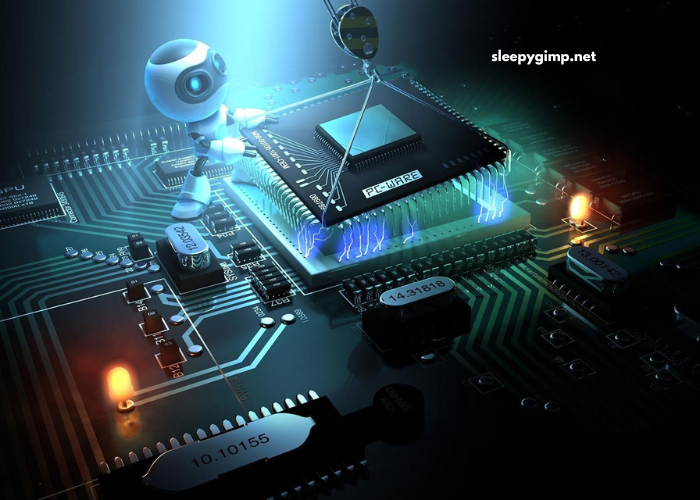In the fast-paced and ever-evolving business landscape, keeping up with technological advancements is no longer just an option—it’s a necessity. As we move deeper into 2025, various emerging technologies are reshaping the way businesses operate, enhancing efficiency, and creating new opportunities for growth. From artificial intelligence (AI) to blockchain and everything in between, businesses are leveraging the latest innovations to stay competitive and meet the demands of the digital age.
This article delves into the most significant technology trends that are transforming businesses in 2025. We will explore how these technologies are influencing industries, revolutionizing operations, and driving business strategies.
Artificial Intelligence and Machine Learning
AI and ML Redefining Business Processes
Artificial Intelligence (AI) and Machine Learning (ML) are no longer futuristic concepts—they are integral to business success today. In 2025, these technologies are expected to have an even greater impact, with businesses adopting them to improve decision-making, enhance customer experiences, and streamline operations.
AI-powered tools can analyze vast amounts of data to uncover patterns and trends that human analysts might miss. For instance, companies in retail are using AI to personalize shopping experiences, predict customer preferences, and optimize inventory management. Similarly, in the healthcare sector, AI is helping physicians make more accurate diagnoses by analyzing patient data and medical images.
Machine Learning algorithms, a subset of AI, are also revolutionizing industries by enabling systems to learn and improve over time without explicit programming. Businesses are utilizing ML for predictive analytics, fraud detection, and even to automate repetitive tasks, saving time and reducing costs.
Impact on Customer Service and Support
One of the most significant applications of AI and ML in business is in customer service. Chatbots, powered by AI, are now commonplace, providing instant responses to customer inquiries. These bots can learn from interactions and become more effective over time, offering personalized responses and addressing customer needs around the clock.
AI-based virtual assistants, such as those integrated into smartphones and home devices, are also transforming how customers interact with businesses. These assistants are not just answering basic questions—they are capable of handling complex transactions, booking appointments, and even suggesting relevant products or services.
Cloud Computing and Edge Computing
The Shift to Cloud-Based Solutions
Cloud computing has been a game-changer for businesses over the past decade, and its influence will continue to grow in 2025. The flexibility, scalability, and cost-effectiveness of cloud solutions have made them essential for companies of all sizes. In 2025, businesses are expected to increasingly rely on cloud services for everything from data storage to advanced computing power.
Companies are moving away from traditional on-premise systems and embracing cloud-based software as a service (SaaS) solutions. This shift enables businesses to access cutting-edge tools without the need for significant upfront investments in infrastructure. Additionally, cloud computing provides remote access to critical data, allowing teams to collaborate and work from anywhere in the world.
Edge Computing: Bringing Data Closer to the User
As more businesses adopt IoT devices and generate vast amounts of data, the demand for real-time processing is growing. Edge computing addresses this challenge by processing data closer to the source, rather than sending it to a central data center. This reduces latency, improves response times, and alleviates the burden on network infrastructure.
In 2025, edge computing will become increasingly vital for industries such as manufacturing, healthcare, and retail, where real-time decision-making is crucial. For example, in manufacturing, edge computing can enable predictive maintenance by analyzing machine data in real-time, preventing costly downtime and improving efficiency.
Blockchain and Distributed Ledger Technology
Blockchain Beyond Cryptocurrencies
Blockchain technology, best known for its association with cryptocurrencies like Bitcoin, is now making its mark across various industries. By providing a secure and transparent way to record transactions, blockchain has the potential to revolutionize industries such as finance, supply chain management, and healthcare.
In 2025, businesses are likely to adopt blockchain to improve transparency, reduce fraud, and enhance data security. For example, in supply chain management, blockchain can track the movement of goods in real-time, ensuring that all parties have access to the same verified data. This can help prevent counterfeiting, reduce delays, and increase trust between suppliers and consumers.
Smart Contracts and Automation
Smart contracts, which are self-executing contracts with the terms of the agreement directly written into code, are another significant application of blockchain technology. These contracts automatically execute actions when predefined conditions are met, reducing the need for intermediaries and speeding up business processes.
In 2025, smart contracts will become more widely adopted, particularly in industries such as real estate, legal, and insurance, where contract execution is typically slow and involves multiple parties. By automating these processes, businesses can save time, reduce costs, and minimize human error.
Internet of Things (IoT)
Connecting Devices for Smarter Business Operations
The Internet of Things (IoT) continues to expand its reach, with more devices being connected to the internet and to each other. In 2025, businesses will be increasingly reliant on IoT technology to collect and analyze data from a wide range of sources, enabling them to make smarter decisions and improve operational efficiency.
IoT devices can be used to monitor everything from manufacturing equipment to customer behavior, providing real-time insights that help businesses optimize their operations. In retail, for instance, IoT sensors can track customer movement and preferences in-store, allowing retailers to offer personalized experiences and better manage inventory.
Smart Cities and IoT Integration
The integration of IoT into urban infrastructure is also gaining momentum. In 2025, we will see more cities adopting smart technologies to improve everything from traffic management to waste disposal. Businesses in sectors such as logistics, transportation, and energy will benefit from these innovations, gaining access to real-time data that helps optimize routes, reduce energy consumption, and improve service delivery.
5G Connectivity
Faster, More Reliable Networks
The rollout of 5G networks is expected to have a profound impact on businesses in 2025. With faster speeds, lower latency, and more reliable connections, 5G will enable new applications and business models that were previously impossible.
For businesses, 5G will facilitate the development of new technologies, such as autonomous vehicles, augmented reality (AR), and virtual reality (VR). In industries like manufacturing, 5G will allow for real-time monitoring of machines and systems, enabling predictive maintenance and increasing productivity.
Revolutionizing Remote Work and Communication
The increased bandwidth and low latency offered by 5G will also enhance remote work capabilities. With more businesses adopting hybrid or fully remote work models, the demand for high-quality video conferencing, virtual collaboration tools, and cloud-based solutions will continue to grow. 5G will make these tools more efficient, allowing teams to collaborate seamlessly regardless of their physical location.
Augmented Reality (AR) and Virtual Reality (VR)
AR and VR Transforming Customer Engagement
Augmented Reality (AR) and Virtual Reality (VR) are no longer confined to the gaming industry—they are rapidly transforming how businesses engage with customers and employees alike. By 2025, these technologies will play a crucial role in marketing, training, and product development.
AR allows businesses to overlay digital information on the physical world, providing interactive and immersive experiences for customers. For example, in retail, AR can allow customers to visualize how furniture or clothing would look in their homes before making a purchase. Similarly, in the real estate sector, AR can help potential buyers take virtual tours of properties from anywhere in the world.
VR, on the other hand, creates fully immersive environments that can be used for everything from training simulations to virtual product showcases. In industries such as healthcare, VR is being used for medical training, allowing practitioners to simulate complex surgeries and procedures in a safe, controlled environment.
Training and Skill Development
As businesses continue to adopt new technologies, there is an increasing need for employee training. AR and VR offer innovative ways to deliver training programs that are engaging and effective. By 2025, many companies will use VR simulations to train employees in high-risk environments, while AR can provide real-time guidance and information on the job.
Cybersecurity and Data Privacy
Strengthening Cyber Defenses
As cyber threats become more sophisticated, businesses are placing a stronger emphasis on cybersecurity in 2025. The increasing reliance on digital technologies and the growing volume of data being generated make companies vulnerable to cyberattacks. As a result, advanced cybersecurity solutions are critical to safeguarding sensitive information and maintaining trust with customers.
AI-driven cybersecurity tools are becoming more common, using machine learning algorithms to detect unusual patterns and identify potential threats in real-time. Additionally, with stricter data privacy regulations being enacted worldwide, businesses must adopt stronger measures to protect customer data and ensure compliance.
Zero Trust Security Models
A key trend in cybersecurity for 2025 is the adoption of zero-trust security models. In a zero-trust framework, businesses assume that no user or device is trustworthy by default, even if they are inside the corporate network. This approach ensures that only authenticated users and devices can access sensitive data, minimizing the risk of breaches.
Conclusion
As we look toward 2025, it’s clear that technology is at the forefront of business transformation. From AI and cloud computing to blockchain and IoT, businesses are embracing a wide array of innovations to drive efficiency, enhance customer experiences, and stay competitive in a rapidly changing landscape. To remain successful, companies must continue to adapt to these emerging trends and invest in the technologies that will shape the future of their industries.
By staying ahead of the curve and leveraging the latest technological advancements, businesses can not only improve their operations but also unlock new opportunities for growth and innovation. The future is bright for those who embrace these trends and continue to evolve with the times.





